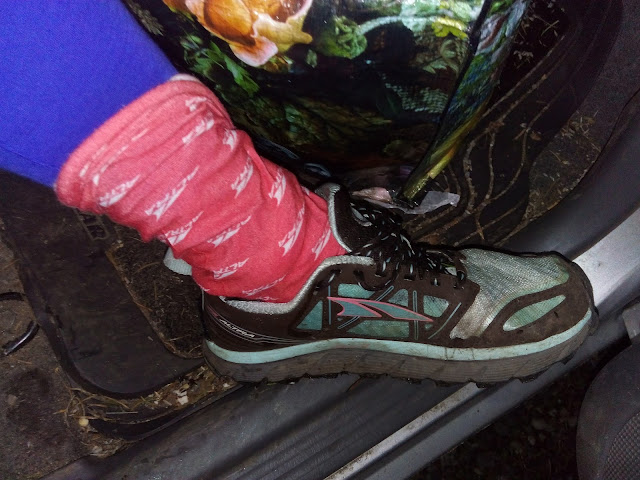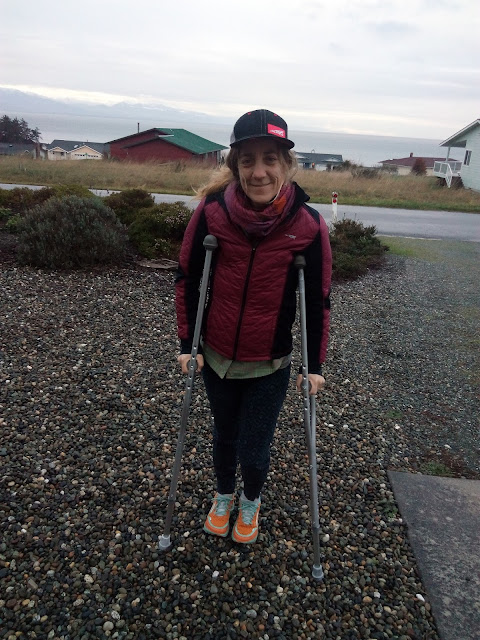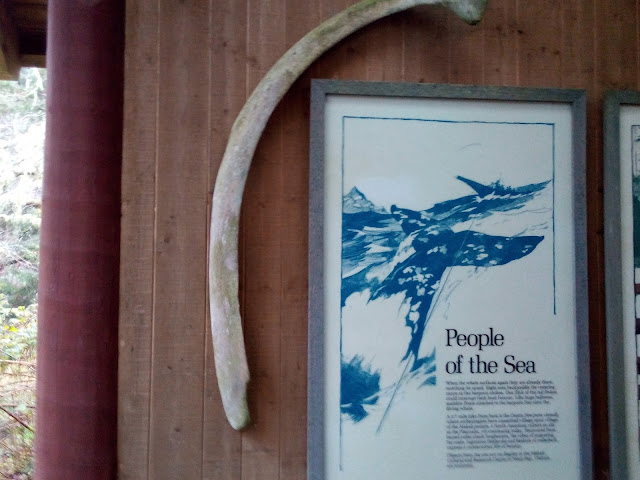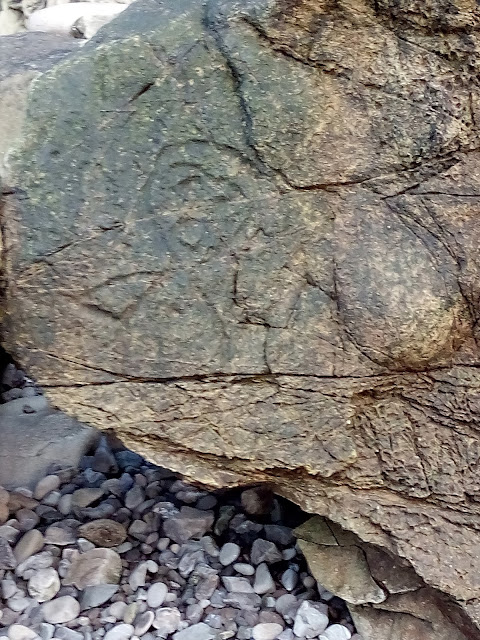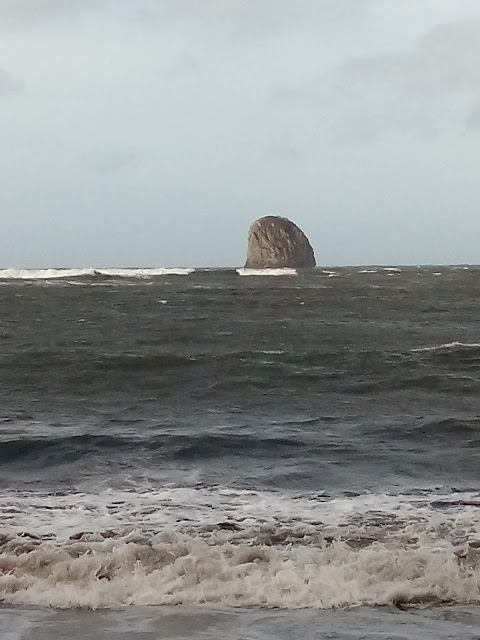Twenty-Eight Miles To Go Before I Finish
The rain began just as dusk started to set. It was Saturday, and I had been running around Lake Youngs since 6:00AM Thursday. I was starting to feel a little bit tired. I still had many miles to go, though, and I would continue to push on through this rain storm. I saw that underneath a huge cedar tree the ground was still dry. I tucked beneath it for just a minute to make a few adjustments before I continued. I put on my rain shell and pulled my hood up over my head. I turned on my headlamp and once again set out into the rainstorm. It came down in sheets, although the rainfall felt light against me. I leaned my head back so that the cool rain could hit my face. It felt good to have the moisture soak my skin and rejuvenate me. I ran the flats and downhills, pushing to get back to the dry shelter at the main aid station.
I wanted to rest during the storm if it was going to continue. I had completely forgotten that I had asked my friend Susie to join me for this last night of the race. She would be waiting for me when I got back to the aid station. I would only have time to change into some dry clothing and head back out onto the course. This would be my last night out there. I needed to move well and get some loops done as quickly as possible.
Each Memorial Day Weekend for the last five years, ultrarunners have gathered at Lake Youngs Trailhead Park in Renton, Washington for the Pigtails Challenge. Van Phan, an accomplished local ultrarunner, began the race in 2011 so that she could take on the challenge of running 200 miles. She ran the race while directing it that year, and it has continued to blossom and grow. The 200 mile distance starts on Thursday morning at 6:00, the 150 mile runners begin on Friday morning, and Saturday 100 mile and 100k runners start. These distances must all be done by 2:00 on Sunday. A 50k is also held on Sunday, with the same cut-off time.
The loop is 9.4 miles long with 900 feet of elevation gain on each loop. Runners reverse direction on the loop after completing each one, checking in at the main aid station first, by running a short lollipop stick trail to reach it. I was running the 200 mile race and began with a 2.6 mile out-and-back. I would then have to run 21 loops to complete the distance. Having completed both the 100 and 150 mile distances here on this course, I knew a little bit about what to expect. This time I would run 5 more loops than I had in the 150 distance. I felt pretty confident that I had it.
I lined up with 8 guys at 6 a.m. The other female 200 mile racer had not arrived. I felt a sense of excitement. If I could finish this race, I would be the only female finisher. I even voiced this excitement to a few of the other runners and some volunteers. Terry Sentinella, the Race Director, counted down the Start, and off we went.
Ras stayed with me for the out-and-back. We chatted happily, feeling a sense of relief that this race was finally underway. After months of training, philosophizing about and preparing for this race, it felt good to finally be on the course.
I planned on checking in at the Main Aid when I got done with the 2.6 mile out n' back, and then heading out again right away for my first loop. I wanted my turn-arounds at the main aid to be quick and efficient. I planned on handling the first 100k as if it were just that; a 100k race. I wanted to just keep going, without sitting down or taking any kind of significant rest until after I had that first 60 some miles completed.
About a half hour into the race, I saw Amanda (I later learned she goes by Mandee), the other female 200 runner. She had arrived late and was now in the race. She looked strong and happy to be out on the course. She was also nearly 15 years younger than me. I now had a little competition. She seemed to be going out pretty fast, so early on in the race. While still running my first loop, Mandee came towards me again. It didn't make sense. She should have run the out n' back, checked in at the main aid and then headed out to do her first loop in the counter clockwise direction, like everyone else, even though she started late. I shouldn't be seeing her coming towards me; she might catch up to me and come up from behind, but not towards me. I stopped her just briefly to ask if she had taken the wrong direction after the out n' back and she just answered a short “ No”. I let it go and again reminded myself to run my own race. It did occur to me that she was having a rough start, and as far as competition goes, this was in my favor.
Van offered to bring Ras and I a pizza without cheese to have in our shelter, knowing we would be getting hungry as the night wore on. The volunteers at the aid stations were getting tuned into the special needs of all of the runners and the first night we were on our own for vegetarian fare. By the second day, there was black bean soup with avocado & corn chips; veggie burgers; veggie dogs; butternut squash soup; bean burritos and vegan pizza. It was pretty awesome having so much food to keep us all fueled. In addition, I had Honey Stinger Waffles, both Caramel and Lemon; Honey Stinger Energy Chews; Expedition Espresso Trail Butter pouches; Picky Bars in several different flavors including Smooth Caffeinator & Cookie Doughness; several cans of vegetarian soups; instant Starbuck's Via coffee pouches; and some Kickstart drinks made by Mountain Dew.
Kathleen and the Mann's, Jules & Mihaela, arrived at the same time to run a loop with me after Van said goodbye. I enjoyed having the evening company, but I told them from the beginning that I would enjoy hearing them visit, but they shouldn't expect me to chime in too often. I said they could lead the way when they wanted to. I was ready to settle into some more “in my head” kind of running. I wanted to run all the flats and downhills, and power hike the uphills. I set out on the loop with these three pacers with a cup of soup in hand, a Mrs. McDougall's Pad Thai with peanut powder sprinkled over the top. It tasted delicious and I sipped it as quickly as possible as I hiked. I didn't want the pacers to get cold or feel like the progress was going slowly. It was good for me to feel the slight bit of pressure. This was still only the first night. I was also beginning to visualize going out solo on the next loop and what I would need in order to do this. I already had my headlamp out on this loop and would be turning it on soon.
We got around the loop. By the end I felt done with having company and was ready to head out solo. I like everyone that was spending time with me on the trail, but I didn't want to engage in any conversation. I wanted to listen to my mp3 player and just move for some miles. When we got back to the shelter, Ras was there. He offered to join me for the next loop, and this was perfect for me. I felt safer having him with me, now that it was getting late at night. I was getting sleepy, but it was too early to sleep yet. We would get one more loop in together and then probably both lay down for a couple hour nap. We had some food at the aid station as we sat in chairs. It was fun to visit with some of our friends and other people in the trail running community, as we sat for a little bit. Maudie and Brandi, two young woman ultra runners working at the aid station, took my shoes off for me and fetched my Altra Lone Peaks from our shelter. I had developed a blister that I had successfully taken care of earlier. I now wanted the open mesh, foot shaped toe box of the Lone Peaks. I had been wearing the Altra Olympus 2.0 for the max cushion on the mostly packed gravel trail. Then I changed to the Paradigms, also with a comfy max cush. It was now time to change things up a bit, as I had planned. I also had 1 more pair of
Altra Running shoes in my arsenal: the Lone Peak 3.0's which I was wear testing and allowed to wear in a race format. I was wearing Injinji toe socks. My feet were holding out quite well, aside from the one blister which was now under control.
It felt good to have the girls massage my feet and get me all set up with the Lone Peaks and gaiters I could now wear again. The Paradigms don't have the Gaiter Trap, so my gaiters work better with the Lone Peaks. Maudie and Brandi set me up by the heater and fed me, and then sent Ras and I on our way when we were done with our night time adjustments. It was great having the crew help and I feel so appreciative of the supportive community that was around for the whole weekend. I was now ready to get a good night time loop in.
Instead, I got out on the trail and felt slow and sluggish. It was fun to be out there with Ras, but I lost some motivation. I drudged on, feeling ashamed that I wasn't moving faster and showing Ras how well I had been doing. I had moved without sluggishness up until now. This was not good. We stopped several times to just sit, once on The Bench of Temptation and another time at the midway aid station. I knew this wasn't ideal, but it at least confirmed that it would be helpful to take a nap in our sleeping bags when we got back to the main aid. Our shelter was all set up for this nap time, complete with an alarm clock and instant coffee (to be made using our Jet Boil) at the ready. As soon as we got back, we checked in at the main aid and told them we were both napping. We asked if they could wake us up in two hours and they were happy to do so. I also set the alarm, put cozy, soft fleece socks on my feet and fell asleep before I knew it.
I awoke to the sound of the 150 mile racers getting ready in the start area. They were full of excitement. I crawled out of my sleeping bag and made coffee. I wanted to get back out there right away. It was light out and time to be moving. It wasn't as hard as I expected it to be. I was soon out on the course and moving pretty well. I felt motivated again and was happy to think about the miles I had completed. Ras had told me Heather “Anish” Anderson would be showing up and wanted to join me for a loop or two. This was awesome news and I was very excited to be having Heather join me. Heather holds the speed record for thru-hiking, in a self-supported fashion, both the Pacific Crest Trail and the Appalachian Trail. [Note: in the intervening months since the 2016 Pigtails Challenge, Heather set the Fastest Known Time for the Arizona National Scenic Trail in self-supported, feet-on-the-ground style.] I got through the loop as fast as I could, expecting Heather to be there when I got back.
Sure enough, she was, and she was just the pacer I needed. I was getting deep enough into this now that I needed someone to help me with some numbers. I knew I just had to keep going, but I wanted to make sure I still had time to rest again that night, make the cut-off and take the time I needed between loops to be ready to head out for another 9.4 miles. She knows all about spending time on the trails going after huge goals. She knows what it takes to stay motivated and to be able to figure out splits, pacing and the importance of fueling properly to get it done. Not only did we have a blast chatting, we had a lot in common to talk about; but she was great at helping me feel confident that I would be able to get this mileage done within the allotted time.
I got out there on that gravel path and made it around another loop. When I got back, it was time for another nap. It was Friday night and I was getting mileage done. I only had another day and a half of this race left.
 |
| Race Director Terry Sentinella briefing the runners starting Saturday morning. |
I kept going all day, making progress and staying not too far behind the rest of the 200 milers. I felt good and ate well. I was happy to have food to eat each time I came through the main aid station. I had heard that Mandee had a rough night out on the course and Terry made the decision to pull her out of the race at 150 miles. He awarded her a buckle and she went home to sleep. She had given it her all, and then some. That girl has heart.
I got in one last loop solo, as the dark of night came on for the last night of the race. It felt good to be at this point, although I was beginning to feel quite drained, physically and mentally. Pushing myself to move with any speed was becoming very challenging. I knew it was getting to the point where I was getting close to the cut-off, even if Terry was allowing me to at least be on my last loop by the cut-off time. I had a pacer coming on, Susie. I hoped that this would help get my motivation level back up and help give me the push I needed to complete the mileage and earn the buckle I so desired, the buckle I had trained so hard to receive.
Susie had already been waiting at the aid station about an hour by the time I got back around the loop. She came into my shelter with me and we started talking about the strategy of getting back out there into the rain, into the dark, into the deep miles. She was game and would do whatever it would take to get me around some loops that would take less than 3 hours each. She had chatted with Ras, and he encouraged her to help get me moving a little bit faster. I was feeling so lazy. I didn't want to try to get in any “fast” loops. I didn't want to quit, I wanted to finish. But as Susie later confessed to me, I wasn't communicating that to her.
We took off into the night. It was probably about 10:30 on Saturday night, the final nighttime hours of the race. Susie reminded me of this. This was the last night I had to be out in the dark, cold, tiring hours of the middle of the night. I would get so tired I was staggering around on the trail, like a drunk. I wanted to curl up anywhere and just take a nap. It was so hard to keep moving when my eyes were shutting and I was having little, short dreams. They were just flashes, but when I awoke for whatever reason from my sleephiking, I knew I had just had a little snippet of a dream. This was a part of pushing forward and using my endurance experience. This was not the first time I had gotten “the drowsies” on the trail, and it would not be the last. I had to keep going now. I could no longer afford to take a nap. I divided a 5-Hour Energy into two doses, taking one right when I realized with Susie that I had the drowsies, and then taking the second part of the dose when we got to the aid station. Sometimes these doses worked, sometimes they didn't. It was worth a try.
Susie and I stopped at the midway aid station, where Brad Hefta-Gaub was kind enough to share some of his coffee from his thermos with me. It tasted so good. I sat in the comfy camp chair, sipping the coffee and listening to he and Susie talk about different things. I just listened. It took too much energy to say much. I was just wanting to wake up and feel more motivated, but enjoying the chair. “Beware of the Chair”, they say.
Susie and I got up and said good bye to Brad. He had been a big help out at the aid station in the middle of the night. It was good to share his company for a little while. We continued on around the loop and then struggled around for another. It would get light on this loop. We were both looking forward to it.
We made it around the loop. I felt a little more awake once the sun rose and the sky was light once again: the final day. Fewer runners were on the course. My feet hurt and I had some piercing pains in my calves, my knees and my feet. These shooting, piercing pains would come and go. I felt pretty beat up. Susie had to go when we returned from the loop. We said goodbye and off she went. I curled up in my sleeping bag for what I hoped would only be a few minutes. Ras came in from his loop and only had one more to go. I had three more to go. He offered to stay with me for a loop. I could get up right then, pull myself together and go out with him. I could still finish this thing off, but it might not be until 5 hours or more after the cut-off. I didn't have a pacer. I didn't know if I could stay awake or keep motivating myself.
Ras needed to get going again and so he did. I stayed in the sleeping bag; torn as to what to do, feeling defeated and needing to turn that corner in my mind. I had sheets of paper with motivational quotes and inspirations on them. I had a chart with splits and mileages remaining all written out by hand. I had done the work ahead of time, but here, in the moment, I was unwilling to do the work it took to finish. I was unwilling to have others wait for me as I pursued a goal. I had thus far not been able to keep a good enough pace to keep me in the game with the others. I was too far behind. I gave up and stayed crumpled in that sleeping bag, until finally I went out to the main aid and admitted my defeat.
It was up to Terry whether nor not to award me a 150 Mile Finisher's Buckle. He gave me the choice of whether or not I wanted to accept it. I did. I now have two of those. Next year I'll be back to earn my 200 Mile buckle. I know I can do it. There is something special about the Pigtails Challenge, Lake Youngs and all of those involved that keeps drawing us back, year after year. As I think of it now, Memorial Day Weekend 2017 can't come soon enough.













